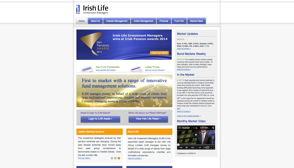Why should I make Additional Voluntary Contributions (AVCs)?
Making regular AVC contributions can help you to build up a bigger fund for your retirement. Depending on your circumstances, you may not have the necessary income in retirement to maintain your current lifestyle. AVCs can be used to minimize any shortfalls in your benefits at retirement.
What is a last minute AVC?
You can make a last minute AVC payment into your pension scheme before you retire. This can be particularly attractive for you if you can get tax relief on the contribution you make before you retire and if you can then get back your AVC fund as a tax free lump sum on retirement.
Please note that all last minute AVCs must be paid into you pension scheme before you actually retire, so it is important to start the process well in time before your retirement date.
How do I know if I am eligible? Contact your financial adviser to find out if you are eligible to make a last minute AVC and for the likely tax treatment of the benefits on retirement.
Are there limits to the AVCs I can pay?
AVC pension contributions that you make while working are treated the same as normal pension contributions for tax purposes, so you may qualify for tax relief at your highest rate of tax. The examples of different tax rates are shown in the table here:
| If you pay tax at 40% | If you pay tax at 20% | |
|---|---|---|
| € 60 | Net Cost to you | € 80 |
| €100 | Total investment to your pension | €100 |
| - €40 | Less tax saved | - €20 |
Based on the example above, if you decided to make an AVC of €100 and you are on the 40% rate of tax, you would receive tax relief at 40%.
Any growth on your AVC pension fund investment funds is also tax free.
The Revenue Commissioners have established limits which apply to the contributions for which you can claim tax relief. The table below displays the percentage of your income that you can receive tax relief on when contributing to a retirement fund. A maximum earnings limit* also applies.
| Age | Maximum % of taxable earnings allowable for tax relief on your pension contributions |
|---|---|
| Under 30 | 15% |
| 30-39 | 20% |
| 40-49 | 25% |
| 50-54 | 30% |
| 55-59 | 35% |
| 60 and over | 40% |
*Note: In any tax year employee contributions are limited according to age and are subject to Revenue approval. This is shown in the table above. This includes any contributions to your main scheme. The maximum earnings limit for tax relief on pension contributions for 2022 is €115,000.
So in the years before your retirement if you are aged 55 to 59 you can contribute 35% of your salary into your pension scheme for tax relief purposes. This percentage increases to 40% from age 60.
What scope do I have for making AVCs?
Normally the retirement benefits which are payable under the rules of your main company pension plan are lower than the maximum benefits which are permitted by the Revenue Commissioners. Therefore, most people have scope to pay AVCs to increase their retirement benefits. For example, some of your earnings may not be included in the calculation of the pension amount payable from your main plan - e.g. overtime, bonuses, commissions or car allowance or you may have entered your pension plan at an age when you are not expected to receive full pension benefits from your company’s main pension plan when you retire.
You should note however that there are now maximum fund thresholds in place. A fund threshold is the maximum fund that a person is permitted to have for providing retirement benefits. If your fund is greater than the fund threshold then the amount in excess of the threshold will be subject to income tax at your marginal rate when you retire. The maximum fund threshold is €2.0 Million Euro.
If you are interested in making AVCs, please contact your payroll department, broker or financial adviser.
What can I use AVCs for at retirement?
There are a number of benefit options at retirement, depending on the individual circumstances of each member and Revenue restrictions:
- Immediate cash lump sum
- Purchase an annuity, to provide an income for life
- Transfer the fund to an Approved Retirement Fund (ARF)
- Increase the tax-free lump sum on retirement, or put the AVC pension fund towards their tax-free lump sum and avoid reducing other annual pension benefits.
- Provide or increase dependant's pension.
Which option or combination of options is best for you will depend on your circumstances when you retire.
For more information about AVCs you can download the following PDF documents:
- AVC member guide
- How to make a single premium contribution and get tax relief on pension contributions
- The Personal Lifestyle Strategy for AVC contributions




